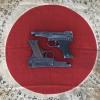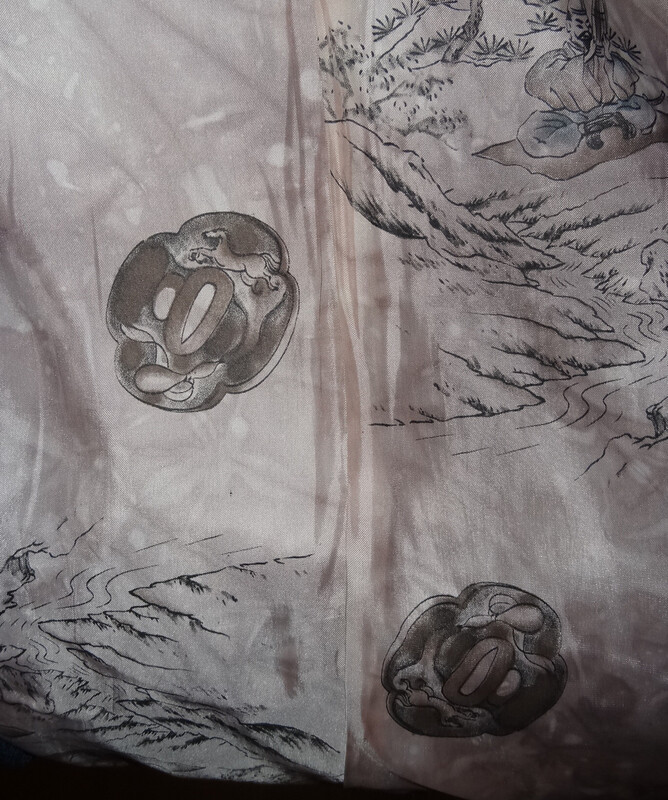
Oldman
Members-
Posts
37 -
Joined
-
Last visited
Oldman's Achievements
-
I had the same observations, and reservations, as other members have responded with. I didn't necessarily mean to endorse her comments. That having been said, she was a lot closer to that reality than any of us are, although her being female may have restricted her access to knowledge of weaponry. Her final remark about the kogai featuring in dramas could perhaps be verified; anyone here familiar enough with classical Japanese dramas? Cheers, Michael BC
-
I recently read an interesting book titled "A Daughter of the Samurai". Published in the U.S. in 1925, the author, Madame Etsu Inagaki Sugimoto, was born into a high ranking samurai family in 1874. Described as an autobiographical novel, it is quite readable and provides many insights into traditional Japanese culture and practices, including shedding light on a number of themes that we see expressed in koshirae. The book is available for free download on the Project Gutenberg website. She doesn't discuss weaponry very much, but in one place laments seeing servants carrying off bundles of katana and armour to the second-hand dealer to raise money. There is also a passage which goes into some detail about the katana, kogatana, and kogai, which I thought might be of interest to NMB members as it is somewhat different from what I've seen previously: "[S]he brought out her other treasure - a slender, blunt knife called a kogai, which, with the throwing- dagger, forms part of the hilt of a samurai's long sword. In very ancient days Japanese warfare was a science. Artistic skill was always displayed in the use of weapons, and no soldier was proud of having wounded an enemy in any other manner than the one established by samurai rules. The long sword had for its goal only four points: the top of the head, the wrist, the side, and the leg below the knee. The throwing-dagger must speed its way, true as an arrow, direct to the forehead, throat, or wrist. But the blunt kogai had many uses. It was the key that locked the sword in its scabbard; when double it could be used as chopsticks by the marching soldier; it has been used on the battlefield, or in retreat, mercifully to pierce the ankle vein of a suffering and dying comrade, and it had the unique use in a clan feud, when found sticking upright in the ankle of a dead foe, of bearing the silent challenge, "I await thy return." It's crest told to whom it belonged and, in time, it generally was returned - to its owner's ankle. The kogai figures in many tales of romance and revenge of the Middle Ages." Cheers, Michael BC
-
Hello All: I'm looking at purchasing a wakizashi with the enclosed NBTHK hozon. The seller describes it as a mumei, late Muromachi, blade attributed to Kanefusa. It is also said to be inscribed with information about a one body tameshigiri performed at a later date (1642). Unfortunately I can't read Japanese and am posting this with the request that someone who can please let me know if the certificate supports the seller's description. Any red flags? Thanks in advance for any insight you can offer. Michael BC
-
I have had a haori coat for some years but just recently noticed that it has tsuba images in the lining fabric. Kantei anyone? Michael BC
-
Yes, to Bruce's comment. Given the enthusiasm with which the samurai adopted matchlock guns, and better ones to follow, I think that the "romance" of the samurai and katana needs to be kept in perspective. There were certainly episodes of large scale slaughter even in the old times. I have read that perhaps 40,000 - 60,000 heads were taken at the battle of Sekigahara for an instance. And to an extent, some of the philosophy and practises of the samurai carried on through modernization, at least to a degree and in certain contexts; fearlessness in the face of death, and honourable conduct come to mind.
-
PM sent.
-
Earlier this year I acquired an iron tsuba. Before buying it I noticed in the listing photos that it had an odd, very glossy, black "patina" and asked the dealer if the patina had been redone or otherwise enhanced. He assured me that it had not. Upon receipt the patina still looked odd, almost like it had been painted with gloss black paint. When handling it I found that my hands felt a bit oily and it smelled like maybe 3 in 1 oil. I followed suggestions from another thread here on the NMB regarding improving patination and did the following: 1) Washed it with hand soap and quite hot water, just using my hands. (Sure enough, it was no longer black, had a more natural brown colour, but a disappointing dull look, as though coated with Hersheys cocoa powder.) 2) Hung it outside on a covered porch, using a cord through the nakago ana. 3) Every couple of days brought it in and handled it all over, rubbing with my fingers, reasonably clean hands. After about 2 1/5 weeks of this treatment it was looking much better so I brought it in and spent the couple of months just handling it, e.g. while watching TV, and it now has a presentable patina. One note: I live close to the ocean and have regular nighttime dampness and mists which sometimes have a certain salinity to them (I've never seen that measured, but items stored outside get rusty faster than in other places I've lived). I was concerned about it being too damp when I hung outside so watched it closely for the first few days but didn't see any active rust starting so maybe the damp, marine, climate helped with the process. This ran longer than I meant to, but thought perhaps others might find some of the details of interest. Cheers, Michael BC
-
HI Greg: I'm interested in one of the tsuba but the link just opens to the front page of the file hosting website; it doesn't show any of your tsuba. Please let me know if I'm missing something. Cheers, Michael BC
-
An Alchemist in action with Kamon (家紋), Japanese family crests Mon (紋)
Oldman replied to djcollection's topic in Tsuba
PM sent. -
Thanks! Michael BC
-
Interesting investigation, hopefully will inspire further look at horimono meanings. I have a (project) ken which I purchased from another member awhile back and I've wondered over the meaning of the horimono on it, now I know! An interesting feature of this knife is that the "ken" horimono is clearly present on one side, a similar image on the other is "missing" the pointed end. For some time I thought that it had just worn away from polishing over the years, but on close observation it appears to me that it was done this way deliberately. Below are a couple of not so hot pictures, but hopefully show the features in question well enough. Any ideas on the two parallel lines without a point? Cheers, Michael BC
-
I once had a WWII helmet liner that looked exactly like the item in question, except for shape. The material looks to me like fibreglass or something similar. Cheers, Michael BC
-
As a martial artist, I train with iaito between 2.50 and 2.55 shaku in length, and am hoping to land on something near that neighbourhood I hope that by your comment about martial arts you don't mean that you intend to use an antique nihonto for iaido or other martial arts practise. Good luck in your search. This is indeed an area in which the journey is the goal. Michael BC
-
Having recently gone through the process of sorting and distribution of the parents' belongings I strongly suggest that responsible collectors should, at a minimum, be sure to clearly identify each item of significant value with; description, source acquired from, amount paid and value at the time you are cataloguing them. That will at least give your family, or other estate administrator, notice that the items have special value and some idea of how much that amounts to. And some of that information will be relevant in valuing the estate for purposes of probate, if needed. Of course discussing this ahead of time with your prospective heirs would be appropriate, as would perhaps some further instructions as to best means of disposing of items family members are not interested in.





